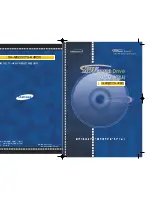
Menu
3
Parameter
Parameter description
protocol
Performance
See
the
description
under
Pr
3.16.
The
diagram
below
shows
a
generalized
representation
of
the
speed
controller.
The
controller
includes
proportional,
(Kp)
and
integral,
(Ki)
feed
structure
Keypad
and
format
Advanced
parameter
descriptions
Serial
comms
forward
terms,
and
a
differential,
(Kd)
feedback
term.
The
drive
holds
two
sets
of
these
gains
and
either
set
may
be
selected
for
use
by
the
speed
controller
with
Pr
3.16.
If
Pr
3.16
=
0
then
gains
Kp1,
Ki1
and
Kd1
are
used,
if
Pr
3.16
=
1
then
gains
Kp2,
Ki2
and
Kd2
are
used.
Pr
3.16
may
be
changed
when
the
drive
is
enabled
or
disabled.
Speed
reference
(wr*)
+
Kp
+
Torque
reference
(Te*)
-
Ki
+
+
+
Speed
feedback
(wr)
Kd
Proportional
gain
(Kp)
If
Kp
has
a
value
and
Ki
is
set
to
zero
the
controller
will
only
have
a
proportional
term,
and
there
must
be
a
speed
error
to
produce
a
torque
reference.
Therefore
as
the
motor
load
increases
there
will
be
a
difference
between
the
reference
and
actual
speeds.
This
effect,
called
regulation,
depends
on
the
level
of
the
proportional
gain,
the
higher
the
gain
the
smaller
the
speed
error
for
a
given
load.
If
the
proportional
gain
is
too
high
either
the
acoustic
noise
produced
by
speed
feedback
quantization
(using
digital
encoders,
resolvers,
etc.)
becomes
unacceptable,
or
the
closed-loop
stability
limit
is
reached
(using
SINCOS
encoders).
Integral
gain
(Ki)
The
integral
gain
is
provided
to
prevent
speed
regulation.
The
error
is
accumulated
over
a
period
of
time
and
used
to
produce
the
necessary
torque
demand
without
any
speed
error.
Increasing
the
integral
gain
reduces
the
time
taken
for
the
speed
to
reach
the
correct
level
and
increases
the
stiffness
of
the
system,
i.e.
it
reduces
the
positional
displacement
produced
by
applying
a
load
torque
to
the
motor.
Unfortunately
increasing
the
integral
gain
also
reduces
the
system
damping
giving
overshoot
after
a
transient.
For
a
given
integral
gain
the
damping
can
be
improved
by
increasing
the
proportional
gain.
A
compromise
must
be
reached
where
the
system
response,
stiffness
and
damping
are
all
adequate
for
the
application.
The
integral
term
is
implemented
in
the
form
of
(Ki
x
error),
and
so
the
integral
gain
can
be
changed
when
the
controller
is
active
without
causing
large
torque
demand
transients.
Differential
gain
(Kd)
The
differential
gain
is
provided
in
the
feedback
of
the
speed
controller
to
give
additional
damping.
The
differential
term
is
implemented
in
a
way
that
does
not
introduce
excessive
noise
normally
associated
with
this
type
of
function.
Increasing
the
differential
term
reduces
the
overshoot
produced
by
under-damping,
however,
for
most
applications
the
proportional
and
integral
gains
alone
are
sufficient.
It
should
be
noted
that
the
differential
term
is
limited
internally
so
that
it
is
ineffective
if
speed
in
rpm
x
Kd
x
Ki
is
greater
than
170.
46
Mentor
MP
Advanced
User
Guide
www.onxcontrol.com
Issue
Number:
4
3.12
{SP03,
0.63}
(Kd1)
Speed
controller
differential
feedback
gains
(Kd2)
3.15
Coding
Bit
SP
FI
DE
Txt
VM
DP
ND
RA
NC
NV
PT
US
RW
BU
PS
5
1
1
1
Range
0.00000
to
0.65535(1/s
/
(rad/s))
Default
0.00000
Second
motor
parameter
Pr
21.19
(Pr
3.12
{SP03,
0.63})
Update
rate
Background
read
3.16
Speed
controller
gain
select
Coding
Bit
SP
FI
DE
Txt
VM
DP
ND
RA
NC
NV
PT
US
RW
BU
PS
1
1
1
Default
0
Update
rate
4
ms
read
















































